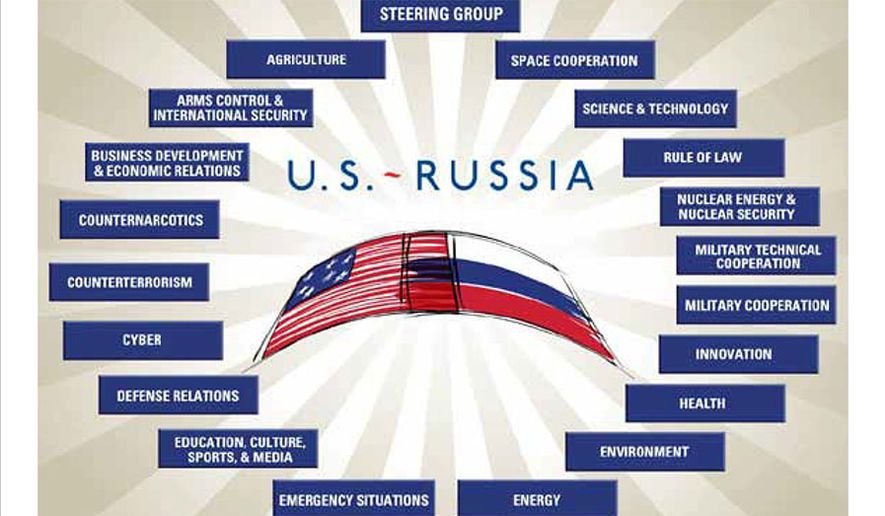OPINION:
After taking an assessment of American foreign policy failures over the past four decades, it is easy to understand why one might become depressed or disenchanted with the prospects of cooperation and peace amongst these two historic allies.
However, as Martin Luther King Jr said, it is “Only in the darkness that you can see the stars” and today’s world holds both its fair share of darkness but also of light… at least for those with the eyes to see.
This light is not located in the present so much as it is in the future and for this reason a few words should be devoted to the hopeful escape from tragedy which a potential future of scientific and economic cooperation holds for the human species.
To do this, we will briefly review several under-appreciated prospects: Space diplomacy, asteroid defense, arctic development and world health.
Space Diplomacy: America’s successful return to manned space flight on May 28th was more than just another space launch, but rather one important component of a much larger commitment illustrated by the May 15 Artemis Accords to not only send humans back to the Moon for the first time since 1973, but to permanently develop a Lunar and Mars-based economy with a focus on international cooperation. This outlook dovetails Russia’ commitment for permanent lunar colonization and resource development which will start with Luna 25 in 2021 followed by Luna 26, 27 and 28 soon thereafter with a plan to have a permanent manned base in early 2030.Describing Russia’s support for this initiative, Roscosmos Chief Dimitry Rogozin stated: “I can imagine what kind of feeling they had all these nine years, having no opportunity to deliver their astronauts to the ISS. It is a matter of honor and national pride. Let us wish them professional success.” The USA and Russia are also close partners in the ISS and Russia manufactures the strategic RD-180 and RD-181 engines used in American launch vehicles.
Both the USA and Russia are partners on the upcoming Lunar Gateway station which will soon orbit the Moon and serve as an important element in the new space-based infrastructure used both in mining and Mars launches.
Asteroid Defense: Faced with the two-fold threat of NATO military encirclement on earth and asteroid collisions from abroad, Rogozin made headlines in 2011 by reviving the concept for a joint US-Russia controlled defense system first announced by President Reagan’s 1983 Strategic Defense Initiative. Rogozin’s 2011 version (titled the Strategic Defense of Earth) now called for turning humanity’s arsenal of atomic weapons away from each other and towards the grave danger of asteroid collisions for which we are woefully unprepared.
Arctic and Far East Development. In 2007, Russia revived a 150-year-old idea that once had the support of leading republicans of Lincoln’s 19th century America to unite rail lines in America and Eurasia through the Bering Strait crossing in the form of a 65 mile tunnel. Russia again re-emphasized its commitment to building this $64 billion project in 2011. With China’s Polar Silk Road having extended the traditionally east-west development corridor into the Arctic and as China and Russia have increasingly merged the Belt and Road Initiative with the Eurasian Economic Union, this new development dynamic offers incredible economic opportunities for all Arctic nations and also an escape from military confrontation.
Part in parcel with this initiative comes President Putin’s Far East development plans as a“21st century national priority” for Russia. The development of new cities, mining, transport corridors and oil and natural gas of Russia’s Far East represent one of the greatest boons for economic investment during the coming century and already features an array of partners from China, Japan, South Korea, India and other APEC nations. Putin’s 2018 proposal that the USA join in this project of win-win cooperation is important not only because it would build trust, create business opportunities and re-establish the lost art of long-term thinking, but would also help link up western businesses into partnership with the Asia Pacific development process now being shaped by China’s Belt and Road Initiative.
Overall, there are many other points of common benefit shared by both nations including education/cultural exchange, climate change, fission/fusion energy research, counter terrorism and COVID-19 response coordination. On this last threat, the issue of a new world healthcare system has become an increasing focus of discussion, especially as nations set their sights on the post-pandemic world order.
Here, both Russia and the USA can play a leading role to ensure a modern and equitable healthcare architecture for nations of the developing sector which has found itself so vulnerable when faced with the threat of world pandemics. Africa, South America, Asia and beyond require vastly improved healthcare services, hospitals, training, and medical technology worthy of the 21st century. Most importantly the world needs preventative systems such as sanitation, clean water, food sovereignty and electricity if COVID-19 and all future threats to world health shall be solved once and for all.
If Russia and America were to apply their best minds to solving these problems rather than fall into a new arms race, then not only would either country benefit immensely, but so too would humanity more broadly.
• Matthew Ehret, Director, Rising Tide Foundation, Montreal




Please read our comment policy before commenting.